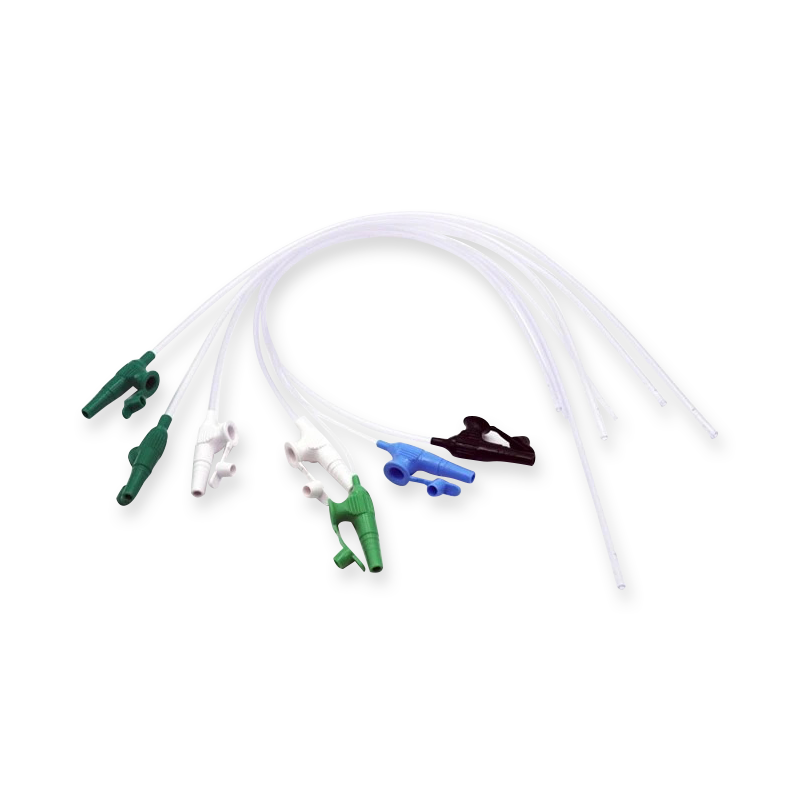TEl: +86-13148388090
Fax:+86-571-88616515
The Ultimate Guide to Buying Suction Catheters
Author: admin / 2025-01-25Suction catheters are essential tools, so hospitals and personnel care about quality and safety very much. They play a great role in clearing secretions from a patient's airway, especially in the ICU, anesthesia, and emergency settings. If you're looking for high-quality suction catheters, this guide aims to help you learn how to buy correctly.

What Is a Suction Catheter?
A suction catheter is a slender, tube-like medical device that connects to a suction machine to remove mucus, blood, or other secretions from a patient's airway. Using negative pressure, the catheter efficiently clears the airway, ensuring smooth breathing for the patient.
Most suction catheters are made of soft PVC (polyvinyl chloride) or silicone, offering flexibility and durability. Available in various sizes and models, these catheters cater to patients of all ages—infants, children, and adults. They're widely used in hospitals, ambulances, and even home care settings.
How to Choose the Right Suction Catheter?
When selecting a suction catheter, it's essential to match the material, size, and type to the patient's needs.
Materials
PVC Suction Catheters
Pros:
-
PVC catheters are cost-effective, if you have a limited budget, this type is a good choice.
-
Ideal for short-term use, PVC catheters are easy to handle and insert.
Cons:
PVC can become less flexible during prolonged use, causing discomfort.
Silicone Suction Catheters
Pros:
-
Silicone is more comfortable for patients, making it better for long-term use.
-
Silicone maintains its softness and elasticity over time.
Cons:
Silicone catheters are pricier, which might not suit all budgets.
Also, they are other materials, above two are most common.
Tip: Bever Medical offers both PVC and silicone suction catheters ensuring safety and reliability. If you are looking for it, you can check the catalog and price on its website.
Choosing the Right Size
The diameter and length of a suction catheter should match the patient's age and body size:
Infants: Use smaller diameters like 5Fr or 6Fr to suit their delicate airways.
Children: Medium diameters like 8Fr or 10Fr are often appropriate, ensuring effective suction without irritation.
Adults: Larger diameters like 12Fr or 14Fr work best for efficient secretion removal.
Types of Suction Catheters
With Side Holes
Features: Designed with side holes along the catheter wall to boost suction efficiency.
Best For: Rapid secretion removal, such as in emergencies or ICU settings.
Without Side Holes
Features: Smooth, simple design without additional holes.
Best For: Precise control during delicate procedures, particularly for specific secretion types.
Tips for Proper Use and Maintenance
Using the Catheter Correctly
-
It's important to check the packaging for damage before use to ensure sterility.
-
Must connect the catheter securely to the suction machine to avoid leaks.
-
Insert the catheter slowly and carefully to prevent airway irritation.
Maintaining and Cleaning
-
Dispose of single-use catheters immediately after use.
-
Reusable catheters must be thoroughly cleaned and disinfected according to medical guidelines to prevent cross-infection.
Common Issues and Solutions
1. Catheter Blockage
If no secretions are being suctioned, or if the suction flow significantly decreases, try flushing the catheter with sterile saline. Slowly inject the saline into the catheter and use the suction device to draw it through. This helps clear any blockages inside the catheter. Additionally, check the tubing for kinks or bends that might obstruct the flow. If the blockage persists, replace the suction catheter with a new one.
2. Malfunction of the Suction Device's Vacuum Function
When suction is weak, and secretions are not effectively removed, check if the vacuum setting on the suction device is appropriate. Keep in mind that vacuum levels differ for adults and children. Also, inspect the tubing connections for any air leaks that could reduce suction efficiency.
3. Improper Operation
Poor handling can cause discomfort for the patient or result in ineffective suctioning. Ensure all healthcare providers receive proper training and are familiar with the correct usage protocols and procedures for suction catheters before performing the operation.
4. Insufficient Equipment Maintenance
Regularly inspecting the suction catheter and device can extend their service life, particularly under frequent use. Following the healthcare facility's guidelines for cleaning and disinfecting the equipment can also help prevent cross-contamination.
5. Patient Discomfort or Pain
If the patient experiences significant discomfort, immediately stop the suctioning procedure. Assess their airway condition and the nature of the secretions. Consider adjusting the technique or replacing the equipment if necessary. Communicate with the patient to understand their feelings and ensure their psychological comfort throughout the process.
Where to Buy Suction Catheters?
You can buy high-quality suction catheters at Bever Medical, a trusted suction catheter factory offering top-notch PVC and silicone catheters. With international certifications, a wide range of sizes, and affordable pricing, we are the ideal choice for bulk purchases. If you’re still unsure about your choice, feel free to reach out—we’re here to help!




